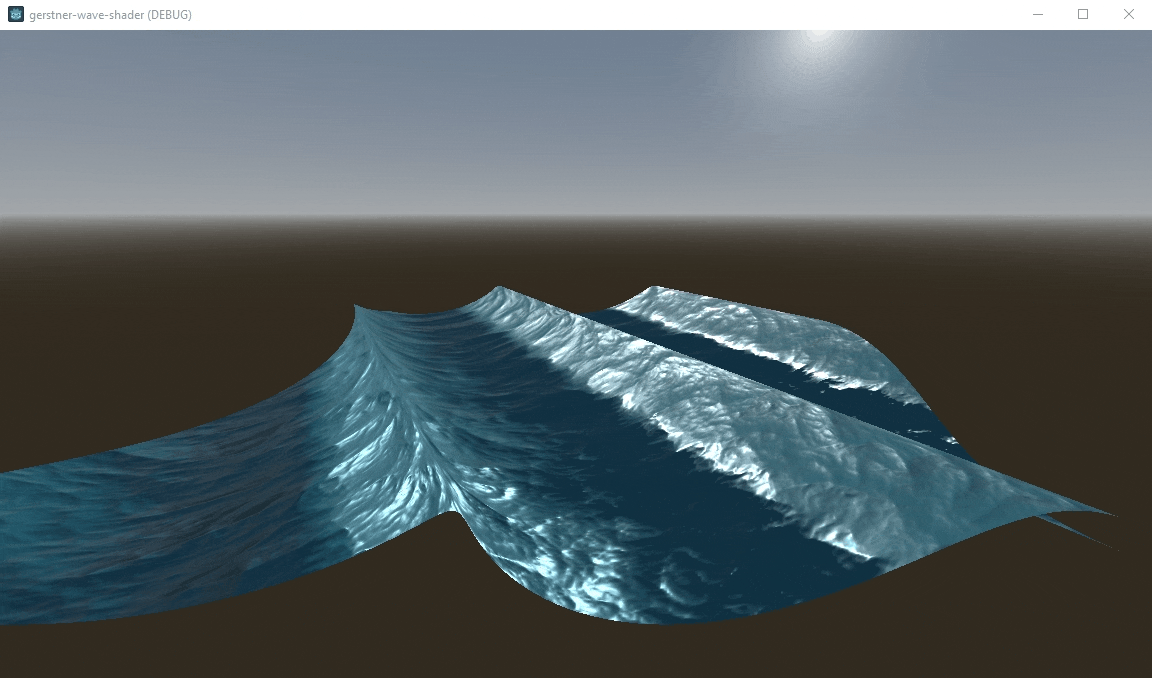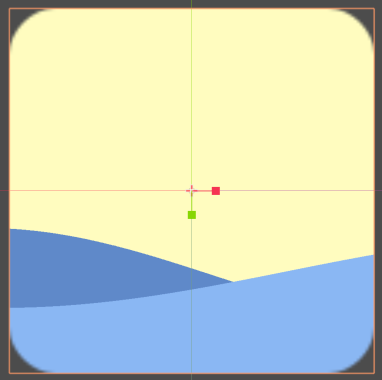Gerstner Wave Ocean Shader
This is vertex shader code for my ocean shader using gerstner waves tutorial. I wrote a complete tutorial that you can follow to understand how to make it. This code is a bit raw & needs refinement before use (for example: I have passed normalize(vector) in parameter, however, its better to normalize in function to ensure reliability).
Shader code
shader_type spatial;
uniform vec2 testdirection;
uniform float speeed;
uniform float steeepness : hint_range(0.0, 1.0, 0.05) = 1.0;
uniform float aamplitude = 1.0;
uniform float waavelength = 1.0;
// direction.y represents z axis (since it is 2D vec)
vec3 gerstner(vec3 vertex, vec2 direction, float time, float speed, float steepness, float amplitude, float wavelength){
float displaced_x = vertex.x + (steepness/wavelength) * direction.x * cos(wavelength * dot(direction, vertex.xz) + speed * time);
float displaced_z = vertex.z + (steepness/wavelength) * direction.y * cos(wavelength * dot(direction, vertex.xz) + speed * time);
float displaced_y = vertex.y + amplitude * sin(wavelength * dot(direction, vertex.xz) + speed * time);
return vec3(displaced_x, displaced_y, displaced_z);
}
vec3 gerstner_normal(vec3 vertex, vec2 direction, float time, float speed, float steepness, float amplitude, float wavelength) {
float cosfactor = cos(wavelength * dot(direction, vertex.xz + speed * time));
float sinfactor = sin(wavelength * dot(direction, vertex.xz + speed * time));
float x_normal = -direction.x * wavelength * amplitude * cosfactor;
float z_normal = -direction.y * wavelength * amplitude * cosfactor;
float y_normal = 1.0 - (steepness/wavelength) * wavelength * amplitude * sinfactor;
return vec3(x_normal, y_normal, z_normal);
}
void vertex(){
VERTEX = gerstner(VERTEX, normalize(testdirection), TIME, speeed, steeepness, aamplitude, waavelength);
NORMAL = gerstner_normal(VERTEX, normalize(testdirection), TIME, speeed, steeepness, aamplitude, waavelength);
}








